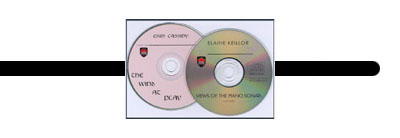

  |
|
Audio samples: F. Liszt: L'amore del poeta morto S.349 ====== Reviews and Purchase info: and additional info at: ======
|
MELODRAMAS Music by F. Liszt, R. Strauss and D. Milhaud Luciano Bertoli, narrator Franz Liszt (1811 - 1886) - 3 Melodramas - 3 Melologhi Richard Strauss (1864 - 1949) Darius Milhaud (1892 - 1974) - L'album di Madame Bovary Recorded at: Cavalli Musica in Castrezzato, BS, Italy, Nov 12, 2013 Liner Notes for the CD by James Wright The “Recitation with Piano” (or “Melodrama”) – a poetic reading with piano accompaniment – was a genre that enjoyed immense popularity in the aristocratic parlors of nineteenth-century Europe and England. Some of the finest examples of the genre, covering a wide range of human emotion, are included on this CD: three (of the five) written by Franz Liszt, and one (of the two) written by Richard Strauss. Liszt’s Lenore is a melodramatic setting of the classic eighteenth-century gothic ballad by Gottfried August Bürger. Since Bürger’s principle character is a ghostly figure whose blasphemy leads to her return from the grave, the poem had a lasting influence on later gothic and vampire literature. In Mór Jókai’s A holt költö szerelme (“The Dead Poet’s Love”), the poet pays tribute to the great Hungarian poet Sándor Petöfi (1823-49), who disappeared during the War of Independence, presumed dead. Liszt’s melodramatic setting of Jókai’s poem is arguably his finest work on a Hungarian text. Der traurige Mönch (The Sorrowful Monk, 1860), Liszt’s melodramatic setting of a haunting ghost tale by Nikolaus Lenau, is the third of the composer’s five melodramas. As Lenau’s trembling knight is confronted by the spectre of the monk, Liszt’s evocatively praeternatural harmonies bear witness to his nascent interest in atonality, an impulse he would explore more thoroughly in his later compositional style. Following the immense success of his first melodrama, Enoch Arden (1897), Richard Strauss was inspired to write Das Schloß am Meere (“The Castle by the Sea,”1899) to accompany Ludwig Uhland’s poem. Unlike Strauss’s setting of Tennyson’s Enoch Arden, where the poetry is sparsely provided with a lean accompaniment, the composer furnishes Das Schloß am Meere witha continuous piano accompaniment throughout. Strauss writes some of his most darkly evocative and harmonically adventuresome music in support of Uhland’s mysterious poem. In its chromatic daring, Das Schloß am Meere has been seen as an important precedent to Arnold Schoenberg's melodramatic masterpiece, Pierrot Lunaire (1912). All of the members of “Les Six” shared a passionate interest in the music of the cinema, and Darius Milhaud was no exception. His “L’Album de Madame Bovary” is a piano suite comprised of excerpts from his score for Jean Renaud’s classic film of 1933. Tired of the banality of marriage and disillusioned with provincial life, Emma Bovary, Flaubert’s protagonist, had an adulterous affair that led to her destruction. Following the 1853 publication of Madame Bovary, nineteenth-century literary critique of domesticity and the institution of marriage became increasingly commonplace: Ibsen’s A Doll’s House and Tolstoy’s Anna Karenina are other fine examples. Milhaud’s brief and evocatively piano vignettes capture the passion, trials and tribulations of the tragic life of Emma Bovary. © James K. Wright |
Click on the disk image at the top of any page to return to the Carleton Sound Home Page.